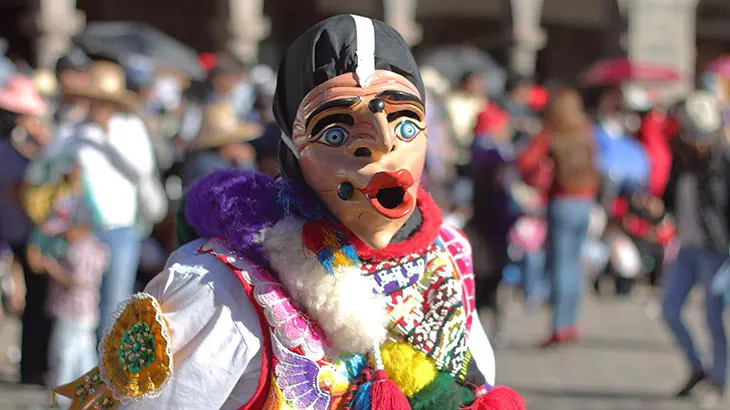Cusco has many Inca customs, traditions and treasures. We all know some of them, such as Machu Picchu and the Incas. However, there are many others that are just as important for the Peruvian people. Machu Travel Peru will give you some information about them.
Throughout the year, there are fiestas and traditions celebrated by people in cities and provinces. The province of Cusco is famous for its fiestas, which include music and dance. The city has a well-planned calendar of events, with activities happening all year long. Now you have something new to add to the Peru Travel itinerary.
Immerse yourself in the culture and history of Cusco
Traditional music and dances
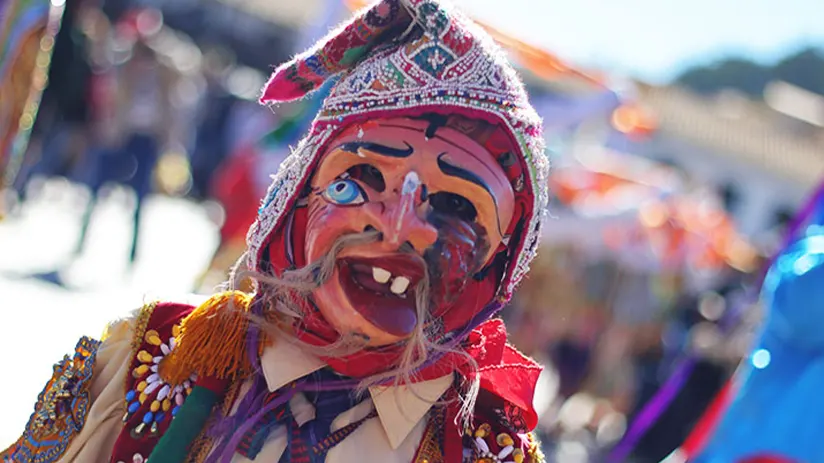
First let’s talk about the dance, through movement and coordination the dance tells a story of each province. The communities of Cusco show their identity and culture through dances. Most of these dances have a history that predates the Spanish invasion. Local people can recognize each dance and know which region it comes from.
Actually, among the interesting museums in Cusco, the Centro Qosqo de Arte Nativo (Qosqo Center for Native Art), you’ll find a permanent display of costumes belonging to the different typical dances of the region. In addition, there will be a theatrical performance of these dances in its own auditorium.
a) About Dances
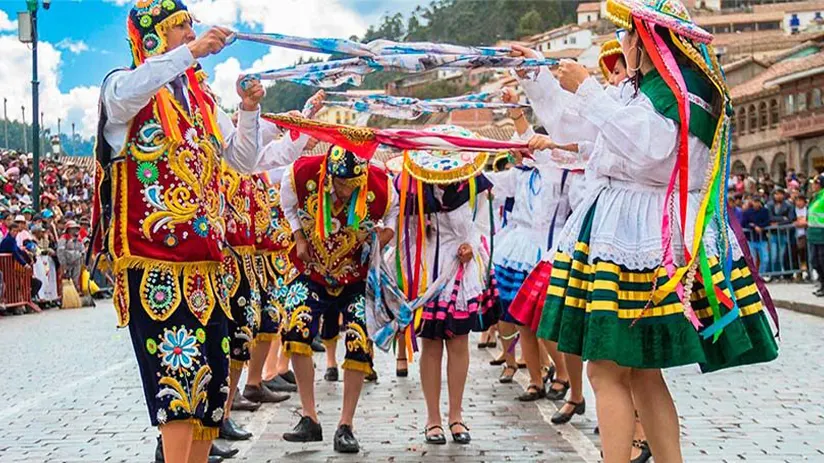
In the Cusco region, you will see many dances that people treasure. Which we will develop below:
| Traditional Dance | Meaning |
| Chukchu | This is funny dance. The dancers act like wonders who go to the jungle. They come back with Malaria. Other dancers play the role of doctors who treat them. |
| Kapac Chunchu | A dance of native Warriors from the jungle who sworn to protect the Virgin as she is carried. |
| Capac Qolla | A dance about merchants from Lake Titicaca who bring their wares to the Cusco región, the costumes feature masks, squares adorned hats and normally a llama fetus on their backs. |
| Kapac Negro | This dance represents black slaves from the colonial era who were bought from Africa to work in the North of Peru, now free they sing and dance to celebrate, the costumes feature a black sad face mask, hats and chain around their waist to represent their slavery. |
| Dansaq | Is perfomed, this dance is performed in front of the Virgin Carmen or the Virgin Rosario, the dancers use costumes of a circular skirt, bells and sandals. |
| Cachampa | Is a dance about warriors, it is said to show the energy of the warriors as he prepares to go to battle, the customes are long robe of different colors with colorful decorations and lots of details. The idea it is said to show the enemy their superiority by the way they are dressed. |
b) About Music
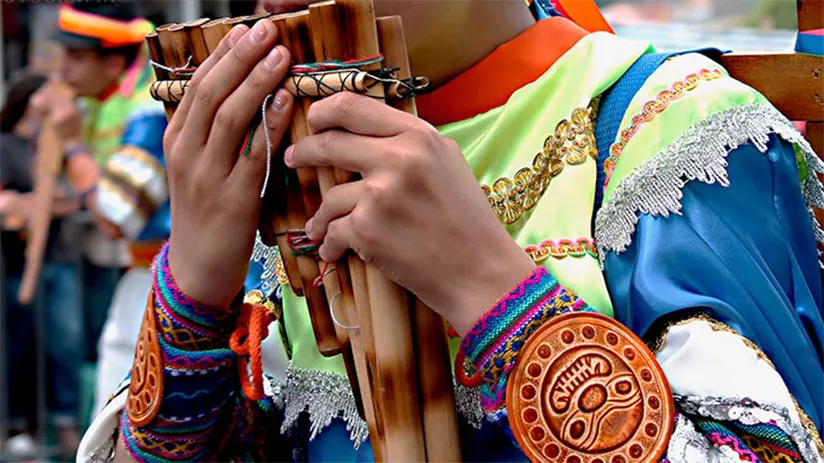
Dancing is not the only important cultural treasure. Music is also a big part of the festivals in Cusco. The music goes well with the dancing. Andean music and the communities it comes from have strong musical traditions. The Inca Empire created music mainly for spiritual reasons. They shared this music with the people through dance and song. There were also dances and song to effect the weather, to bring rain or to repel frost and hail.
Music today is mixture of many different genres. The first type is Folklore, which comes from the Andes. It mainly uses panpipes and guitars. The songs are sung in Spanish or Quechua, the language of the Inca. This music you will hear in any part of Cusco, enjoyed by young and old alike.
Huayno music is another genre of Folklore, this music is traditional in weddings or parties in the Andes, features dancing with a lot of hopping and stomping. Criolla music comes from the African slaves and is mainly listened to in Lima and on the coast of Peru, this music features Spanish guitars and percussion instruments. Also listened to by the people in Cusco is Chicha, which is very popular, it is a mixture of rock, cumbia (pop) and huayno, with soulful lyrics about the poverty and heartbreak. Today the young people list the Reggaton which is a fusion of pop and reggae, this is popular in the clubs of Cusco.
Music in Cusco includes many different types of musical instruments, wind instruments including the Zamponia, the Zamponia has two separate rows of pipes (you might know this as panpipes) ties together by string, these are the most famous of the instruments and are a tradition in Cusco, today are made from bamboo pipes. The Quena or flute is the oldest known wind instrument in Cusco, this instrument was traditionally made from clay and featuring six finger holes.
Of the percussion instrument the Bombo is the most popular, a large wooden drum, made from hollow wood and animal skin they come in many different sizes and feature in most folkloric bands. School and Universities participate in Cusco traditions by encouraging the students to dance in the many festivals and fiestas during the year, this helps to keep these traditions alive. Go to the main plaza in Cusco on any Sunday and you will find some school or organization doing one of the many different dances of the region. Dance and Music are a large part of Cusco treasures something not to be missed when traveling to the high Andean town of Cusco.
Festivities in Cusco
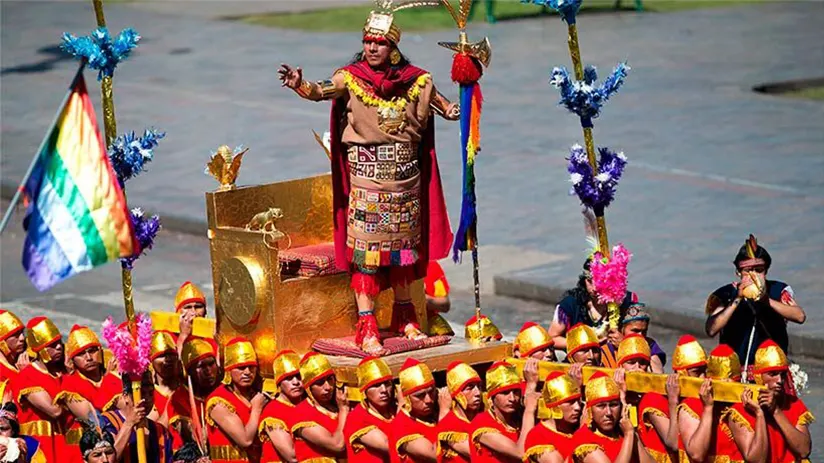
There are many typical festivals in Cusco. Every year, this place transforms and fills with magic, color, and culture diversity.
Here we can visualize dazzling parades, folkloric dances and typical costumes. Some of the most important events are Carnaval Cusqueño, Corpus Christi, and Cruz Velacuy. Whithout mentioning the amazing Inti Raymi developed in three important areas of Cusco, Qoricnacha, Plaza de Armas and Sacsayhuaman, if you take a walking tour in Cusco, you’ll enjoy of these area Festival. Others include the Lord of Qoylloritty and Santurantikuy.
The main feature of these festivities is religious syncretism. This is where Andean culture blends with Spanish traditions. It shows new identities and adaptations to customs and rituals.
Handycrafts in Cusco
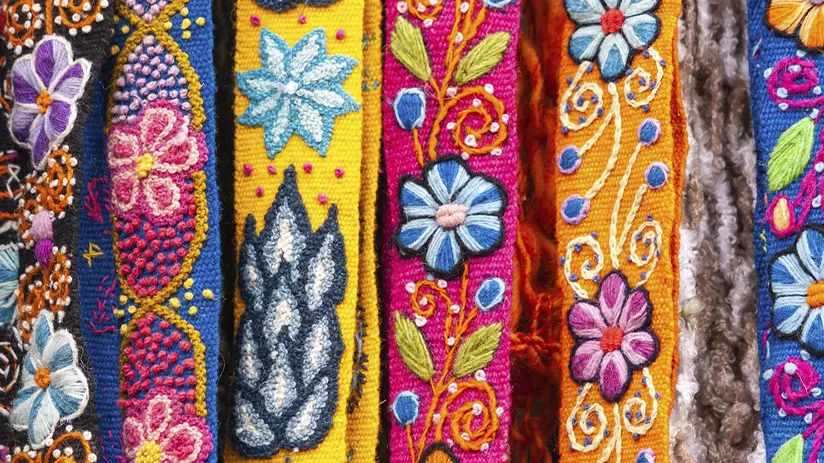
Handicrafts in Cusco are a very important pillar of the place. Since the Cusqueños are unique and exceptional with respect to the colors and shapes in their work.
- In the first place, we have the textile; many people recognize Cusco as a reference for weaving. The loom comes from our Inca ancestors. It has been passed down to the Quechua communities over many generations. Local craftswomen transform the alpaca, llama, and vicuña fibers using a manual procedure. It is a symbol of identity and preservation of archaeological sites in Cusco.
- In second place, the Cusquenian silverware showcases a combined Spanish and pre-Hispanic influence. The silverware artisans in Cusco have developed their skills in Pisac and the Sacred Valley. They use various techniques and styles. The material normally used is silver or bronze with zoomorphic forms. If you want one of these accessories, you can find them at the markets. Visit the markets in Pisac, San Pedro, or the Artisan Market in Cusco. You can find the Artisan Market on Avenida Sol. It is important to know that silverware helps preserve culture. This culture passes down from generation to generation.
- In third place, we have Cusquenian ceramics. Here, you can create different types of pieces. These pieces use various techniques passed down since the Incas. Which over time have continued to develop until today, allowing to adapt to modernity. In ancient times, pottery was made from clay. This led to dark, brown, and reddish colors. The backgrounds often showed agricultural, religious, and ceremonial themes. Artisans had a natural love for mother earth.
About Gastronomy
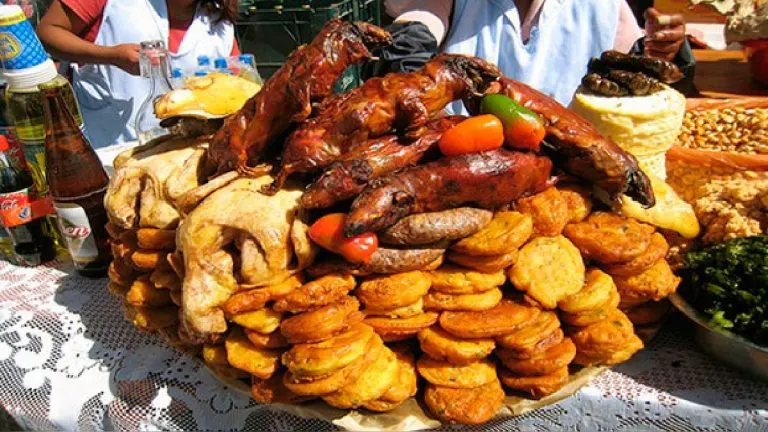
Cusquenian food is characterized by using local ingredients such as potatoes, corn, quinoa and a variety of meats such as guinea pig, alpaca, pork rinds, mutton among others. Likewise, we can mention that food represents the culture of Cusco through incredible flavors and mixtures. People prepare and taste Cusco’s main dish, the Chiriucho, for Corpus Christi.
We should also note that Cusco dishes have a history. They come from both pre-Hispanic times and colonization. These dishes use Inca ingredients as a base, along with other products that chefs added later. The products as a base to the products that were incorporated with the arrival of the Spaniards. In this sense, we will name some of the other emblematic dishes of Cusco, which are enjoyed on special dates throughout the year:
- fried trout
- soups such as chairo and quinoa
- baked cuy guinea pig
- pork crackling
- corn with cheese
- paw paw bramble
Cusco is a city that transports you to the magic of the Incas and the process of evangelization, which has amalgamated the cultural heritage and natural landscapes of this beautiful place. If you are thinking of living an unforgettable experience, Cusco is definitely the place.
“I HAVEN’T BEEN EVERYWHERE, BUT IT’S ON MY LIST”
We hope, together with the Machu Travel Peru team, to have been helpful. As you will see, the Coricancha is a must-see for newcomers. This marvelous temple is located in the historic center and is a mandatory stop on your city tour. Visit Cusco city and learn more about the interesting Inca culture. If you want to know more about our different routes, you can consult with our team of qualified advisers. They will happily help you organize the wonderful trip of your dreams. You can start to learn about our private city tours with them.
Peru has so much to offer, it can be hard to know where to start. With many years of experience in the tourism sector, Machu Travel Peru is happy to help with anything regarding your trip to Machu Picchu and any tours around it. Make your Machu Picchu experience an unforgettable one!
